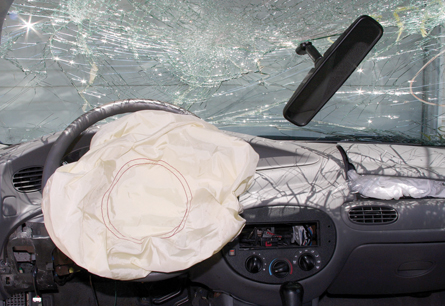Module 1
1. Module 1
1.6. Lesson 2
Module 1—Momentum and Impulse
Lesson 2—Impulse: Changing Momentum
 Get Focused
Get Focused

© Melissa Brandes/shutterstock
In Lesson 1 you learned that large, heavy vehicles or those that travel at high rates of speed have considerable momentum. In the event of a sudden stop, such vehicles will experience a large change in momentum. In the instant prior to the collision, the occupant of a vehicle has the same velocity as the vehicle. For example, the velocity could have been more than 100 km/h. Very shortly after the collision, the vehicle and the occupant would have had a very different velocity—probably zero. Both the vehicle and occupant experienced a huge change in momentum during this collision. How is it possible to reduce injury and death when an occupant in a vehicle experiences a large change in momentum during a collision?
Recall what you learned in Lesson 1. A force is required to change the momentum of the occupant. How can you limit the damage caused by this force? Seat belts and airbags both can play a major role in limiting damage to the occupant. How are Newton’s laws of motion applied to the designs of these devices?
To understand this correctly, we need to explore the concept of impulse and how it relates to a change in momentum and Newton’s laws of motion.
In this lesson you will explore the following essential questions:
-
What is impulse?
-
How is impulse related to a change in momentum?
-
How is impulse used in the design of safety devices that protect the occupants of vehicles during a crash?
 Module 1: Lesson 2 Assignment
Module 1: Lesson 2 Assignment
Your teacher-marked Module 1: Lesson 2 Assignment requires you to submit responses to the following:
-
Assignment—A 1, A 2, A 3, and A 4
-
Discuss—D 2
You must decide what to do with the questions that are not marked by your teacher.
Remember that these questions provide you with the practice and feedback that you need to successfully complete this course. You should respond to all the questions and place those answers in your course folder.